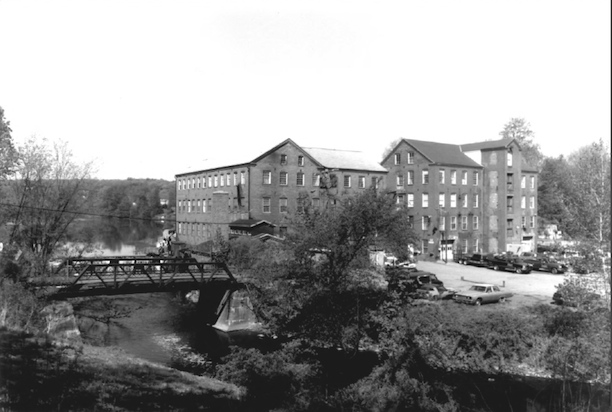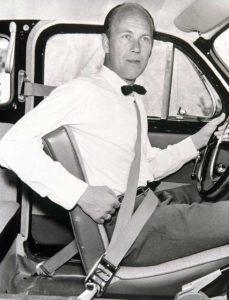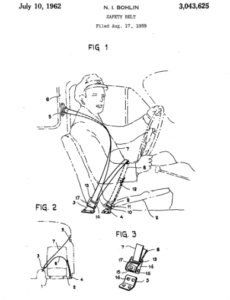By Edward T. Howe
Connecticut joined several other states and the District of Columbia mandating seat belt usage for children and adults in automobiles in 1985. Subsequent changes in the law, especially regarding infants and children, further strengthened safety requirements. Yet controversy over wearing seat belts accompanied its evolutionary history.
Seat belt invention in the United States began when Edward J. Claghorn secured a patent on February 10, 1885, for “hooks and other attachments” in order to keep tourists secure in New York City taxis. When cars appeared in the early decades of the 20th century, crude lap belts/two-point safety belts (attached at two endpoints with a strap that buckled over the abdomen) kept passengers from tumbling out of their seats. As cars became more plentiful, and automobile injuries and deaths more frequent, medical doctors in the mid-1930s began arguing for lap belts in all cars. Their pleas went unheeded until Nash Motors (1949-50) and Ford Motor Company (1955) introduced optional lap belts. Drivers generally disliked these lap belts because they only offered lower-body protection in an accident.
A major breakthrough occurred in passenger safety when Roger W. Griswold and Hugh DeHaven patented an innovative three-point belt (two lap belts and a diagonal belt) in 1955. By improving on this early effort, Nils Bohlin, a Volvo engineer, invented what became the prototype of the modern seat belt in 1958. Protecting the upper and lower body, the mechanism received a U.S. patent on July 10, 1962.
Improving Automobile Safety in Connecticut
At a more local level, Connecticut firms made their own attempts at auto safety improvements. The Russell Manufacturing Company of Middletown received a patent for a passenger harness in 1957, while the Capewell Manufacturing Company of Hartford obtained a patent for a buckle assembly in 1961. Also that year, the Connecticut legislature enacted a law that new cars had to have “anchorage units” or points for attaching seat belts. Shortly thereafter, a 1963 law required new cars be equipped with seat belts (but did not mandate wearing them).
As traffic fatalities mounted nationwide, Congress responded by enacting the National Traffic and Motor Safety Act of 1966 that allowed regulators to require the installation of seat belts in new cars (effective January 1, 1968). Nevertheless, seat belt usage remained low in Connecticut and elsewhere, with auto manufacturers and drivers opposed to belts and “passive restraints” (e.g., airbags) until the early 1980s.
Significantly, New York became the first state to mandate the use of auto seat belts, effective December 1, 1984. Connecticut subsequently passed its mandatory law in 1985, which went into effect on January 1 the following year. Connecticut drivers and all front-seat passengers had to wear a seat belt and the driver had to ensure that all passengers between the ages of four and sixteen wore a seat belt regardless of where they sat. Rear-seat adults aged sixteen and older were not required to wear a belt. In 1994, the law was amended to require seat belt usage for children four to sixteen years old.
In 1982, Connecticut enacted a child auto restraint law that required children younger than a year old to be in a federally approved seat. Children from one to four years had to be in a safety seat or strapped into the back seat with a safety belt. Further amended changes required the use of a five-point harness car seat for children four years or younger and/or other options for those between five and fifteen years old.
Edward T. Howe, Ph.D., is Professor Emeritus at Siena College near Albany, N.Y.











